10 of Ireland’s most charming villages

Ireland’s most beautiful and well known villages are easy to love. Even their names – Doolin, Adare, Dingle, Kenmare – roll off the tongue in a smooth syllable or two, as if they are part of a jingle or the end word of a rhyming couplet. Some of them rocketed to fame when they caught the eye of a film crew – such as Cong in The Quiet Man (1952) or Trim in Braveheart (1995), while more places grew in prominence because of their proximity to large cities or popular attractions.
Their obscurity has preserved their wonderfully idiosyncratic character
Yet dig a little deeper and you’ll discover some of the most charming in the more remote areas of the Irish countryside, where the past sits more comfortably with the present. Their obscurity – perhaps because of a limited bus service or their narrow country roads – has preserved their wonderfully idiosyncratic character. They might even be more beautiful than their high-profile counterparts yet perhaps less appreciated by tourists, because they are not as accessible. But, for me, that just adds to their allure.
Knightstown, Valentia Island, County Kerry
Population 243
It’s fair to say that Peter FitzGerald, 19th knight of Kerry and former owner of Valentia Island through inheritance, was a natural born entrepreneur. In the mid-19th century, he developed the local quarry, which produced attractive blue-hued Valentia slate – and sold it to roof London landmarks including Westminster Abbey, St Paul’s Cathedral and the Houses of Parliament, as well as the Paris Opera House.
Knightstown was built to FitzGerald’s design, and the result is a neat streetscape with low-lying vernacular architecture that housed workers, with a bridge to connect the island to the mainland. He was also a keen botanist, and his legacy also lives on in the forests and gardens that surround the pretty village, including Glanleam House, his former residence.
Related: On the Blueway to Tipperary: nature and history on Ireland’s new kayaking routes
However, it’s Knightstown’s role as the European hub of transatlantic cable that put this westerly outcrop on the map. In the 1850s, a message transmitted between Knightstown and the Bay of Bulls in Newfoundland, Canada, pioneered a new age of communication.
For some low-tech engagement, drop by Boston’s Bar, close to the pier, which offers a reliable pint with a fireside setting. The Royal Valentia Hotel is a 19th-century grande dame close to the marina with rooms from €76 .
Garrykennedy, County Tipperary
Population 215
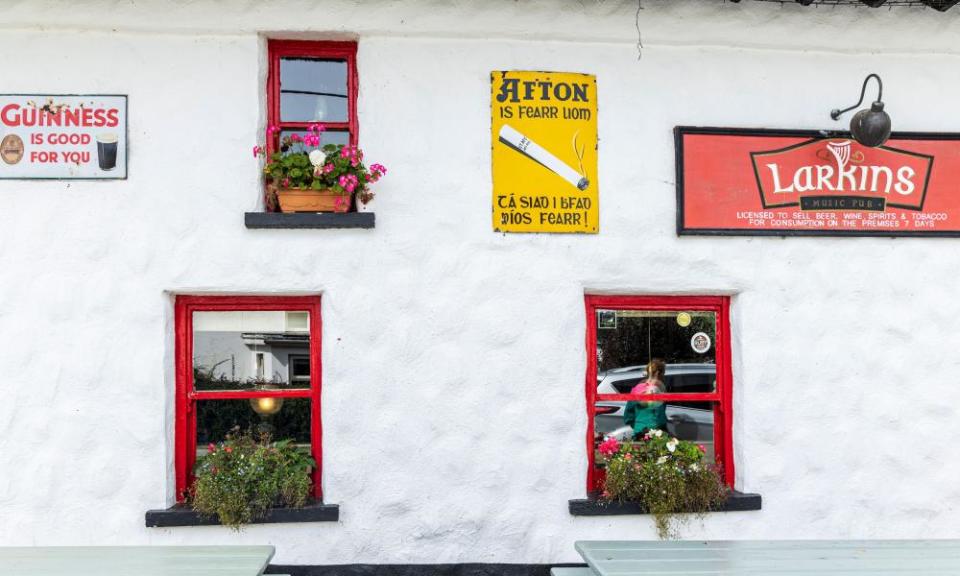
This sliver of a village is sort of backwards, in the sense that the prime access is by the lake, and visitors find it difficult to get their bearings unless they start at the gorgeous harbour front. The crumbling limestone 15th-century castle by the quay was once owned by the powerful Kennedy clan (the village name means Garden of the Kennedys).
The tower house was pulverised by Cromwellian fire during the 17th-century, and the rest of it disappeared when the harbour was developed a couple of centuries later, which leaves it greeting visitors with a sort of defiant hand gesture shape.
Garrykennedy used to be a transport hub for building materials but these days its wooded shoreline offers a welcome retreat for Lough Derg’s leisure traffic, as it drifts along the Shannon, Ireland’s longest river. There are Instagrammable views an hour’s hike away at the Lookout, a spectacular perch above the lake with views into Clare and Tipperary.
Larkin’s bar in the village is a low-ceilinged thatched cottage with great food and local craft beers. Lakelands View Cabin is a self-catering log cottage on the waterfront a few minutes’ walk from Garrykennedy, which accommodates up to six from €110 a night (minimum two nights).
Castletownshend, County Cork
Population 196

Castletownshend’s beguiling streets plunge steeply down to its quays. It feels like a slipway, as if the tall, elegant houses might cast off at any moment and disappear over the hazy horizon into another realm. The spirit of the past lingers like the salty air from a time when Anglo-Irish gentry gathered for a game of croquet while waiting impatiently for cucumber sandwiches to be served on the lawn.
Capturing the spirit of that time, local woman Edith Somerville and her cousin Violet Martin co-wrote The Irish RM trilogy of novels, which were adapted for television almost a century later. The cousins are buried in the village at St Barrahane’s, a little church on a hill, reached by climbing 52 steps – one for every Sunday of the year. Inside, three magnificent Harry Clarke stained glass windows give a heavenly backdrop.
The Castle, the Townsend family home since the 17th century, is now open to guests, offering beautifully appointed rooms at the end of the waterfront (from €100), and is directly below the church. To capture spirits of a different nature, climb up the village street to old-world Mary Ann’s Bar, and stay for its excellent seafood.
Rathmullan, County Donegal
Population 493

Few would believe that this sleepy village, which dips and curls around a sandy beach on Lough Swilly, could have played such a deadly role in Irish history. It’s a veritable checklist of all that went wrong in Ireland from the late 16th century – from the kidnapping of young Red Hugh O’Donnell by Queen Elizabeth’s lord deputy Sir John Perrot to the flight of the Earls and collapse of Irish societal structure and the capture and execution of revolutionary Wolfe Tone.
A magnificent medieval friary, destroyed in those frenzied years, overlooks the lake, and Rathmullan House a tranquil heritage property, has exquisite rooms (from €160 B&B).
The village is the gateway to the beautiful east coast of the Fanad peninsula, one of the most northerly points in Ireland and home to some of its finest beaches along Ballymastocker Bay; and the ridged mountains offer spellbinding views across valleys, lakes and coast. After a day exploring, drink in the lake-view setting of Inch Island and Inishowen peninsula from Rathmullan’s Beachcomber Bar.
Graiguenamanagh, County Kilkenny
Population 1,475
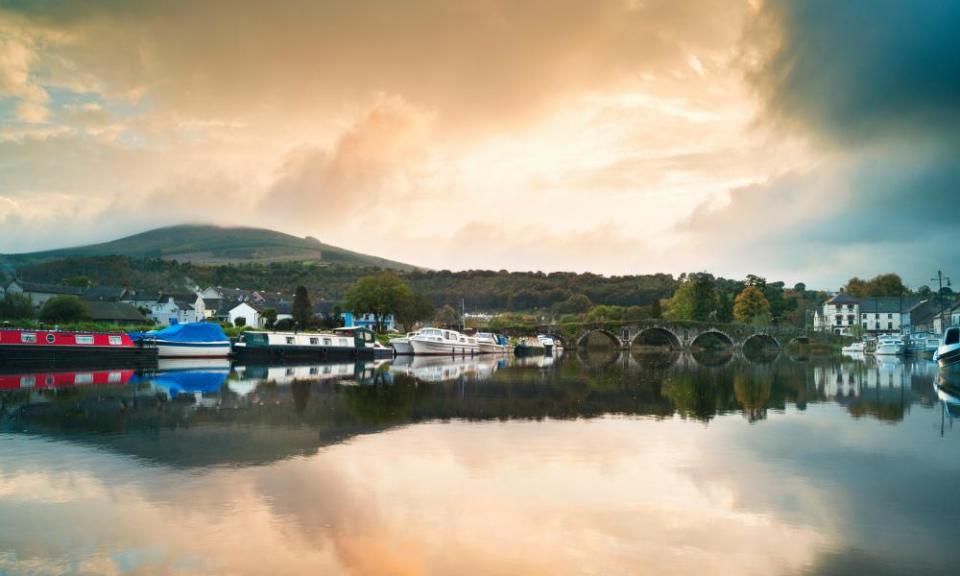
Graiguenamanagh (greg·nuh·maanah) needs to marinate in the ear for a while – and there’s little hope of a snappy hashtag with a name that long. The last effort to put it on the map ended almost as soon as it began more than 200 years ago, when the Grand Canal Company developed the quays well beyond capacity and added a fine, overpriced hotel for good measure. Both lay idle for centuries, but the village has finally grown into its infrastructure, with cleverly designed walking routes that lead to the summit of nearby Brandon Hill, and to popular canoeing lanes.
The most striking feature is the seven-arch ivy-clad bridge linking the town to neighbouring County Carlow across the gushing Barrow River. When floodlit at night, it adds a moody glow to the setting. Graiguenamanagh means “village of the monks” – the neat streets weave around 13th-century Duiske Abbey. Behind its simple stone walls are a clerestory, royal effigy and medieval floor tiles.
Hidden among the village lanes are a small museum, secondhand books and Mick Doyle’s, the best pub in town, if not all of Leinster, which sells fishing tackle as well as pints of stout. The Waterside Guesthouse in the centre of the village has river views from €130.
Kilmore Quay, County Wexford
Population 372
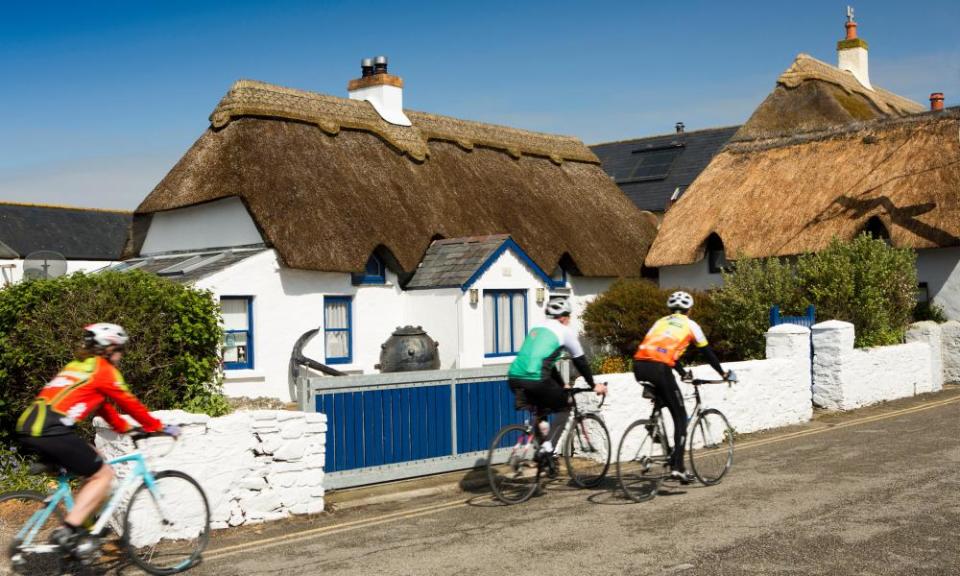
A panoply of whitewashed thatched cottages, stone-rendered houses, a church and two-storey buildings huddle by the harbour in this village that grew organically over the centuries.
Locals turned to the sea during the 19th century’s great famine and developed the quays to avoid starvation. That legacy lives on today, with a steady stream of brightly painted vessels in its marina. Fishing isn’t the only hark back to the past in this chaotic but exquisite corner of south-east Ireland. Yola was an ancient form of Norman English unique to this area for centuries, and it still influences the local dialect.
Other quirky traditions include the piling of timber crosses by a local cemetery before a burial. Kilmore is close to perilous Hook Head, and along with Crooke village in County Waterford is said to be the origin of the phrase “by hook or by crook”. Divers enjoy exploring shipwrecks in its harbour, and land lovers can enjoy the dunes and local sea catch at Kehoe’s Pub and Parlour. The Wooden House is a pretty inn with rooms and apartments in the village from €99.
Inis Oírr, Aran Islands, County Galway
Population 281

Generally referred to as “the village”, Inis Oírr’s (or Inisheer’s) main hub is a succession of townlands joined by low stone walls, like a grey and green patchwork. There are only a couple of cars on the island, so it’s peaceful. It was connected to mainland electricity only a few decades ago, and it’s that sense of an island moving to its own rhythm – like the slow lapping of ocean waves on a fine day – that drew literary greats such as WB Yeats and JM Synge here in the late 19th century.
The past is evident everywhere: the torched ruin of O’Brien’s Castle dominates the skyline; Inis Oírr’s patron saint, Caomhán, has lain behind a sunken church in the local cemetery for more than a millennium; and locals cycle or walk past a 4,000-year-old burial mound daily.
In season, a highlight for most is an early-evening pint, after the ferries have left, at Tigh Ned, which is close enough to the white sandy beach to catch the scent of ocean spray. Hotel Inis Oírr is a lively pub with comfortable rooms from €117.
Kilfenora, County Clare
Population 175
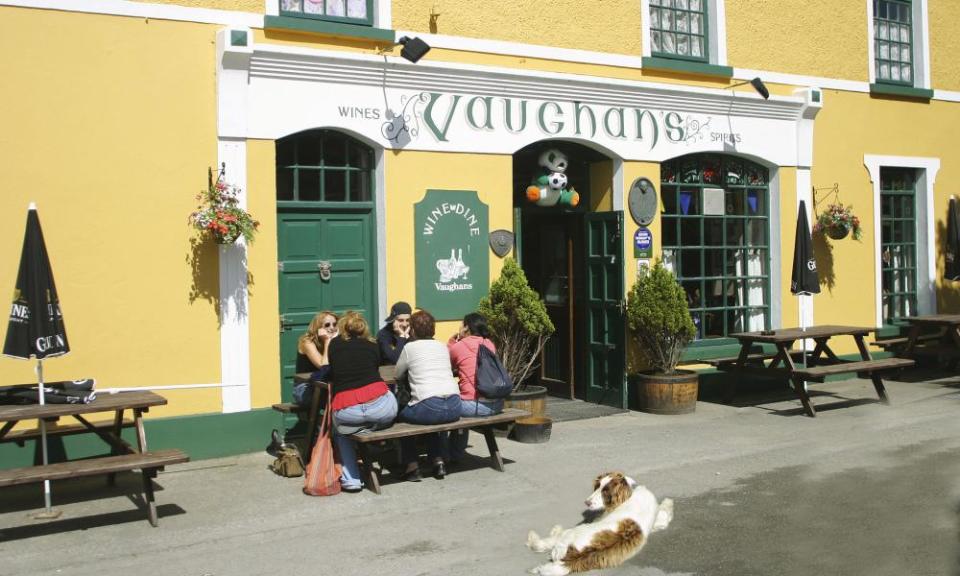
Until recently, the pope was technically bishop of Kilfenora owing to an ecclesiastical glitch in the 19th century, though his holiness never addressed the tiny congregation in the village church. However, it did attract another eminent member of the clergy – when Channel 4 set an episode of Father Ted in local pub Vaughan’s during the 1990s.
Since then, the village has retained a refreshing off-grid vibe, despite its proximity to the busy County Clare coastal route that passes by the famous Cliffs of Moher. A wide junction in the middle of town muddles the symmetry of the main street, but the rows of plaster-rendered and stone buildings preserve its appeal. The Burren Centre in the heart of the village explores Kilfenora’s setting on the southern rim of the ethereal limestone park of the same name.
Down a side street is the glass-domed Cathedral of St Fachanan, with its superb collection of high crosses. Floodlit after dark, their features look particularly dramatic.
Vaughan’s is in the middle of town and the best place to catch a traditional Irish music session. It also has rooms from €80 a night.
Killala, County Mayo
Population 562
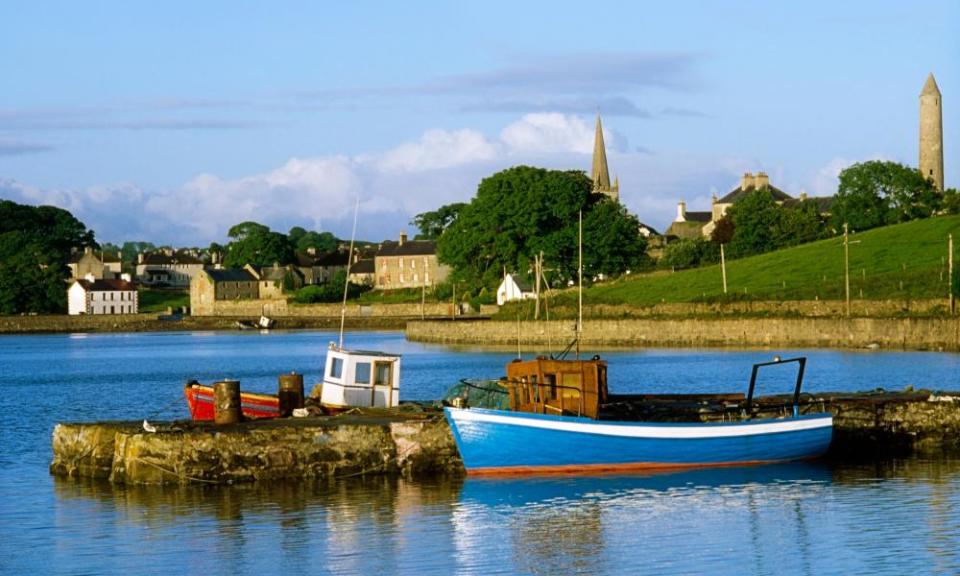
When French general Jean Joseph Amable Humbert’s three warships, a brig and more than 1,000 troops dropped anchor in Killala Bay in August 1798, they began a reshaping of Ireland. As a cornerstone of the quixotic 1798 rebellion and catalyst of the 1801 Act of Union, the invasion had a devastating impact on civil rights in Ireland for centuries.
Killala has lived in the shadow of “the year of the French”, as it was called locally, with statues in the village square and signposts commemorating Humbert’s arrival. A medieval round tower rises 25 metres above the village’s low-rise architecture like a giant sword, with a noticeable bulge on the render from repairs in the 19th century after a lightning strike.
The streets appear to be designed to roll down to Kilcummin harbour, in case anyone forgets the past, but they also lead to some fine beaches and, 20 minutes west, Downpatrick Head offers one of the best ocean views in Ireland. In town, stop by the Village Inn on Church Street for seafood and friendly banter. The Acres offers rooms over a pub in the village from €100.
Carlingford, County Louth
Population 1,445

There was something a bit fishy about the economic demise of this former English garrison town in the early 18th century. The resident silver herring shoals moved out of the bay, which, along with war and other misfortunes, left the village destitute for more than a century. While it was the death knell for local enterprise, the silver lining was that there was no incentive to develop Carlingford, and its characterful streets were left intact. The village was spared everything from garish Victorian architecture, vast industrialisation and the 1960s bungalow blitz.
Today, Carlingford is a paragon of late-medieval architecture and infrastructure – almost unlike any other village in Ireland. The ancient gates, tower houses, winding streets and village walls, along with its Cooley peninsula setting and Cooley Mountains backdrop, have brought a change of fortune. Tourists are replacing the silver herring and injecting some life back into the local economy.
Bars and restaurants are opening or expanding, too – but the old fireside chair at PJ O’Hare’s bar, with a bowl of mussels and pint of Guinness, remains a firm local favourite. Carlingford House is an elegant country house in the village, with rooms from €120.

 Yahoo Movies
Yahoo Movies 
